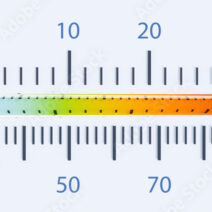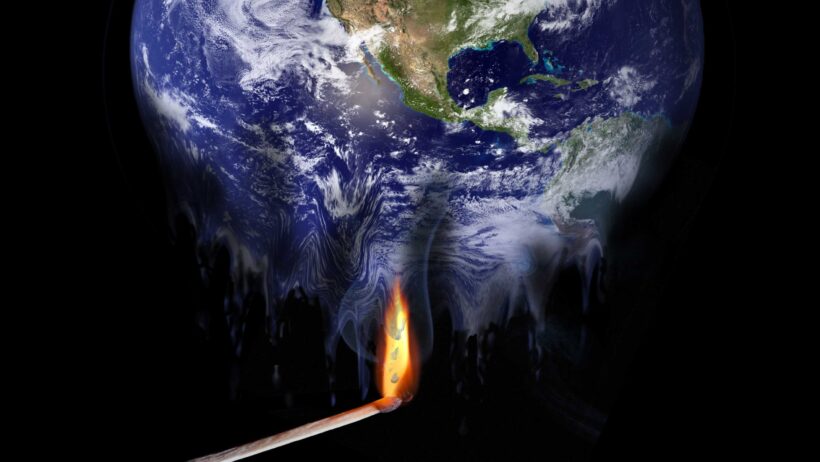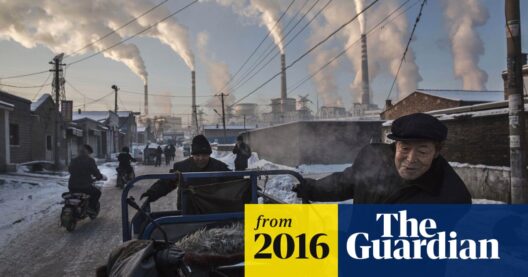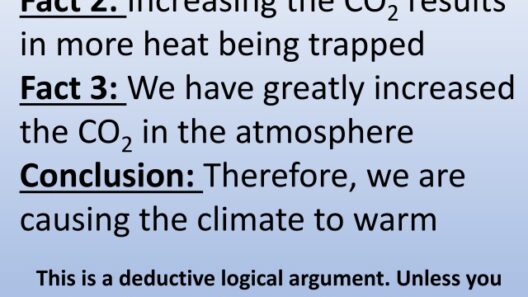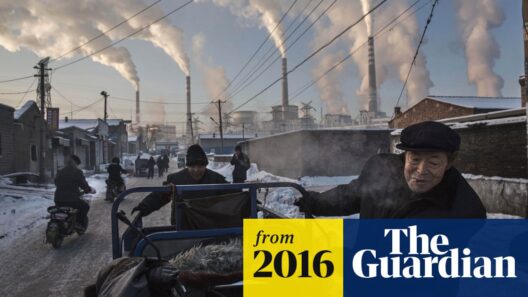As the wintry gusts embrace us in the depths of winter, one might ask, “How can global warming be real when it’s so frigid outside?” It’s a mischievous quandary that many ponder, especially when snow blankets the ground and frost clings to window panes. However, beneath this apparent contradiction lies a sophisticated interplay of climatic phenomena that cannot be overlooked. To navigate this intricate web, we must delve into the difference between weather and climate.
Weather refers to the short-term atmospheric conditions we experience daily. It encompasses immediate variables such as temperature, precipitation, and wind. In contrast, climate embodies the long-term patterns that emerge over decades or even centuries. Global warming is primarily a climatic phenomenon, resulting from the gradual increase in average temperatures over the Earth’s surface due to elevated greenhouse gas emissions.
The term “global warming” is often conflated with anecdotal experiences of sudden cold snaps or hefty snowfalls, leading to widespread skepticism. It is imperative to understand that while individual weather events may seem contradictory to the principles of a warming planet, they do not invalidate the overarching trend of climate change. Weather can oscillate significantly from day to day, and even season to season. However, climate change reveals a persistent rise in average temperatures, driven largely by human activities such as burning fossil fuels, deforestation, and industrial processes.
Consider the metaphor of a boiling pot of water on the stove. When you initially turn up the heat, the water’s surface might still appear somewhat placid. This stabilization represents the intermittent weather fluctuations. However, over time, the relentless application of energy transforms that water into steam. Similarly, the gradual accumulation of greenhouse gases in our atmosphere sustains long-term warming, despite temporary deviations manifested in cold weather events.
Intriguingly, these very fluctuations in weather can be exacerbated by the changes in our climate. For instance, the warming atmosphere holds more moisture; as temperatures rise, more evaporation occurs. This increment in moisture can lead to intensified winter storms. The precipitation that falls may manifest as rain in some regions, while in others, it may crystallize into heavy snow. Thus, the colder winters cannot be construed as evidence against climate change but rather as a reflection of a disrupted and dynamic system.
Moreover, the polar regions are particularly illustrative of this phenomenon. The Arctic is experiencing a significant reduction in sea ice and an increase in temperature at a rate nearly double that of the global average. The loss of ice alters ocean currents and jet streams, consequently affecting weather patterns far beyond the poles. This disruption has been linked to colder and more unstable winter conditions across various mid-latitude locations, showcasing how a warming planet can still yield chilling weather extremes.
When discussing global warming, it becomes essential to reference the concept of “feedback loops” that further complicate climate dynamics. One prominent feedback mechanism involves the albedo effect—the ratio of reflected sunlight to absorbed sunlight. As ice and snow diminish, darker ocean waters or land surfaces emerge, which absorb more heat. This accelerates warming and leads to even more melting in a self-perpetuating cycle. Therefore, when shimmering snow eventually succumbs to warming, it amplifies the very phenomenon that seems counterintuitive during winter months.
Addressing the implications of global warming unveils the chilling reality of climate change on ecosystems and human society. Seasonal shifts in temperatures and precipitation patterns can lead to disruptions in agriculture, increased flooding, and even alterations to migratory patterns of species. As species struggle to adapt to the rapidly shifting climate, there is an uptick in biodiversity loss, negatively impacting ecosystem resilience.
Furthermore, the economic implications are far-reaching. Industries dependent on stable climates, such as agriculture and fisheries, are increasingly vulnerable to unpredictable weather patterns. Rising temperatures may lead to decreased yields in some regions while creating new agricultural challenges elsewhere—all of which contribute to food insecurity and economic instability. Addressing these issues calls for a collective effort to mitigate climate change by adopting sustainable practices and transitioning to renewable energy sources.
It is essential to approach discussions about climate change with a mindset that transcends simplistic assertions. As we confront the multifaceted challenges posed by a warming world, empathy and understanding are vital. Engaging in conversations that consider scientific evidence while addressing public concerns is paramount for fostering a society that is informed and responsive to the intricacies of climate issues.
Ultimately, the task ahead is formidable, yet the potential for meaningful change is equally profound. By cultivating an awareness of the distinctions between weather and climate and recognizing the intent behind global warming, people can approach the topic with a critical and informed lens. The narrative surrounding climate change must evolve beyond mere debates, aspiring towards actionable solutions and collective stewardship of our planet. With conscientious effort, we can combat the effects of global warming and envision a sustainable future that acknowledges the urgency of the challenge while celebrating the tenacity of human ingenuity.
In conclusion, the next time winter winds whip around you, remember that climate change is a real and pressing issue, even as you experience the cold. It is crucial to embrace the complexity of the topic, understanding that short-term weather anomalies do not diminish the reality of long-term climate trends. Join the discourse, advocate for sustainable practices, and strive for a deeper comprehension of our planet’s intricate climate system. The health of the Earth rests in our actions today.

